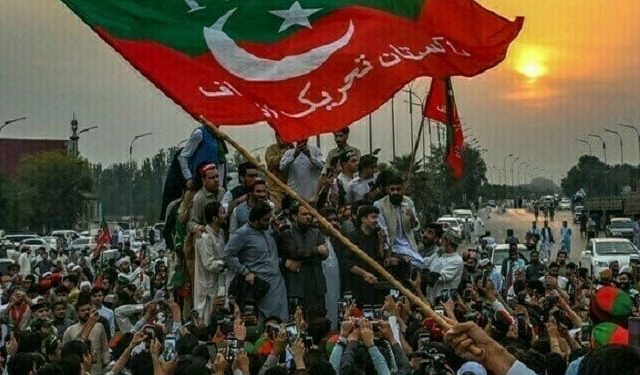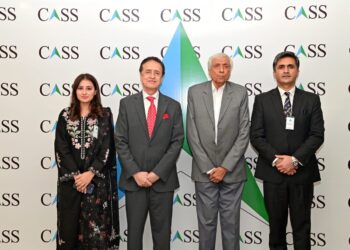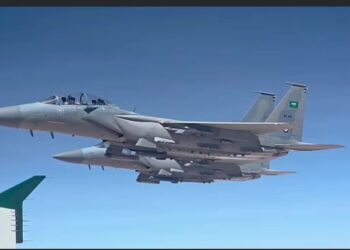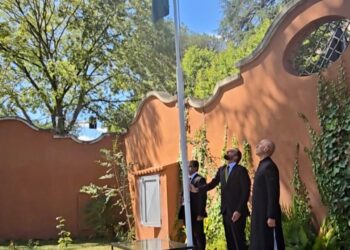Introduction: PTI Calls for Nationwide Protest Amid Political Tensions
Lahore — The Pakistan Tehreek-e-Insaf (PTI), one of the country’s most prominent political parties, has announced plans to hold a nationwide protest on August 5, 2025. The protest is intended to rally public support and demonstrate political strength amid mounting pressure on the party following a series of legal and political setbacks.
However, despite the public announcement, the party’s internal leadership struggles have surfaced once again, as no unified or coherent strategy has yet been finalized regarding the nature, scale, and coordination of the protests—particularly in the politically significant city of Lahore.
Leadership Rift Over Protest Format and Locations
Conflicting Views Within PTI on Protest Execution
According to credible sources within the party, the PTI leadership is currently divided on the strategy for the August 5 protest. While the protest call extends to all constituencies in Punjab, key disagreements have emerged over how the demonstrations should be conducted—especially in Lahore, where protests tend to attract large crowds, media attention, and increased scrutiny from law enforcement.
Some senior PTI leaders are advocating for a centralized mega rally in Lahore, consolidating party workers from all local constituencies. They believe that such a large-scale gathering would send a strong and unified message of resilience to both the ruling coalition and the broader public.
On the other hand, several party strategists, including Chief Organizer Alia Hamza, are urging a decentralized approach, wherein party leaders and workers stage separate demonstrations within their respective constituencies. This model, they argue, is less likely to provoke arrests, police action, or legal consequences for participants.
Concerns About Arrests and Legal Repercussions
A Risk-Averse Strategy Gains Momentum
The caution being exercised by part of PTI’s leadership stems from a series of crackdowns on political protests in recent years. The party’s workers and leaders have frequently faced arrests, legal charges, and even violent confrontations with law enforcement agencies during previous rallies, particularly in Punjab and Islamabad.
In the aftermath of the May 9, 2023 incidents, when several PTI rallies turned chaotic and were met with stern responses from law enforcement, the party has become increasingly cautious about mobilizing crowds without a solid, risk-managed framework. Many within the party fear that a centralized protest in Lahore could give authorities the pretext to detain dozens of workers, especially those already under surveillance.
Given these risks, the proposal to decentralize protests—effectively reducing visibility while increasing safety—has gained traction. Party insiders confirm that the majority of ticket holders and local leadership support the decentralized approach.
Lahore: A Focal Point of Political Activity and State Response
Why the Capital of Punjab Matters So Much
Lahore holds tremendous symbolic and strategic importance for any political movement in Pakistan. As the capital of Punjab, which is the country’s most populous and politically influential province, any political activity in Lahore tends to attract disproportionate attention from the media, civil society, and the state apparatus.
For the PTI, which has historically performed strongly in Lahore and surrounding regions, the city represents both an opportunity and a liability. A well-organized protest here could serve as a catalyst for political momentum, while a poorly managed event could result in crackdowns, negative press coverage, or unintended escalations.
Because of this delicate balance, the failure to agree on a protest location and structure in Lahore has stalled broader protest planning across Punjab.
Lack of Central Strategy Frustrates Party Workers and Supporters
Grassroots Confusion and Waiting for Direction
As the clock ticks closer to August 5, PTI workers and supporters—particularly at the grassroots and district level—are expressing frustration and confusion due to the lack of clear instructions from the party’s central leadership. While enthusiasm for participation remains high among the rank and file, many are unsure whether they should gather in centralized venues or prepare for local constituency-based demonstrations.
“We are ready to come out for the protest, but we need to know where, how, and under whose leadership,” said a local PTI worker from Lahore’s NA-127. “Right now, we are just waiting for a decision from the top.”
Several district-level organizers report that they have received mixed signals from central command. Some were told to prepare logistical support for a joint rally, while others have been instructed to plan individual constituency-based gatherings.
This inconsistency is hurting planning, volunteer coordination, and even communication with local law enforcement.
Party’s Tactical Dilemma: Visibility vs. Safety
Balancing Political Optics with Ground Realities
The leadership’s dilemma boils down to a classic political trade-off: Should the party prioritize visibility and impact through centralized demonstrations, or should it opt for safety and sustainability via decentralized protests?
A single large protest offers media coverage, a strong public narrative, and the visual optics of unity—but it also invites crackdowns and surveillance. A distributed model minimizes risks but also dilutes the media spectacle and perceived strength of the movement.
Some political analysts believe this strategic confusion is indicative of the PTI’s larger organizational challenges, especially after the departure or arrest of several high-ranking leaders and the disqualification of party founder Imran Khan from contesting elections.
Impact of Internal Divisions on PTI’s Mobilization Capacity
An Organizational Vacuum?
Observers argue that the ongoing legal and political pressures on PTI have weakened its central command structure. The absence of a clear, charismatic, and present leadership figure—like Imran Khan—has made decision-making fragmented. In his absence, regional leaders, organizers, and MNAs are pulling the party in different directions.
This leadership vacuum has also hurt PTI’s ability to respond to political events quickly, formulate unified responses, and manage nationwide protests with coherence.
Future of August 5 Protest: What Lies Ahead?
Awaiting a Final Decision from PTI Leadership
With less than a few days left until August 5, the PTI leadership is under mounting pressure to finalize and announce a clear plan of action. Workers, supporters, and even journalists are awaiting updates from the party’s official communication channels.
According to party insiders, a high-level consultation meeting is scheduled to take place in the next 24–48 hours, where senior leadership, including regional presidents, central organizers, and legal advisors, will make the final call regarding:
- The location of Lahore’s protest
- The format of demonstrations in other Punjab constituencies
- Safety protocols to avoid arrests and clashes
- Coordination with legal and media teams
The official announcement, likely to be issued via press conference or social media, is expected to outline timings, locations, and leadership participation.
Conclusion: PTI at a Crossroads Amid High Stakes
As Pakistan navigates a politically volatile environment ahead of potential elections and ongoing judicial scrutiny, the PTI’s August 5 protest will serve as a test of the party’s organizational capacity, internal unity, and street power.
Whether the leadership opts for a bold, centralized demonstration or a tactical, decentralized approach, the outcome of this protest will likely influence the party’s political momentum, public image, and electoral prospects in the coming months.
For now, party workers, political observers, and opponents alike are watching closely as the Pakistan Tehreek-e-Insaf struggles to turn a protest plan into an impactful political moment.

























